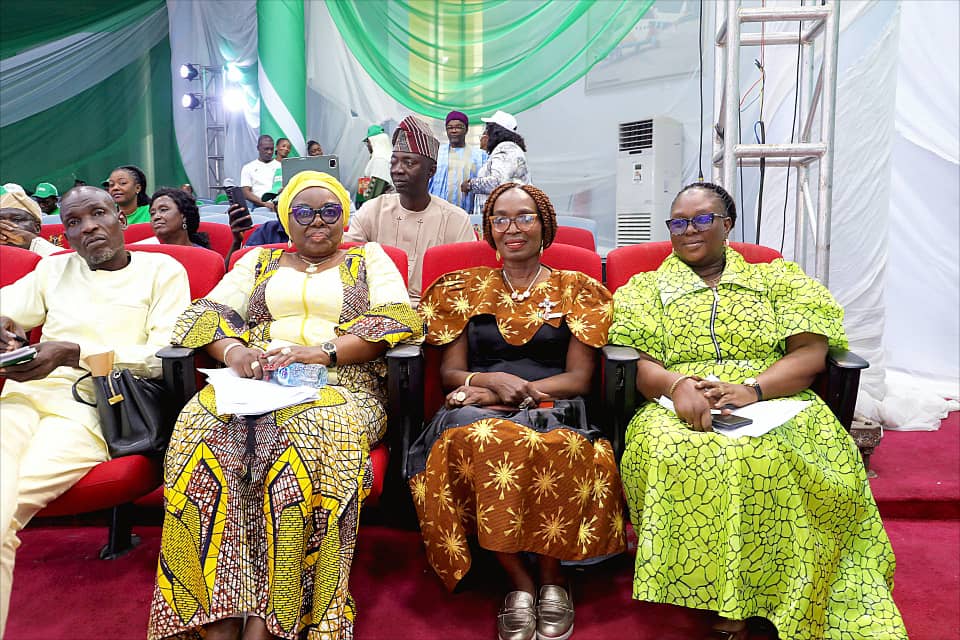…Launches Strategic Blueprint to Strengthen NSDNM) 2025–2030 In Nigeria
By Mercy Gadia Adi
The Federal Government has reaffirmed its commitment to transforming Nigeria’s nursing and midwifery profession with the official launch of the Nigeria Strategic Directions for Nursing and Midwifery (NSDNM) 2025–2030, a roadmap designed to strengthen education, workforce development, leadership, and service delivery across all levels of healthcare.
Speaking at the National Nursing Summit and NSDNM Launch in Abuja, the Coordinating Minister of Health and Social Welfare, Professor Muhammad Ali Pate (CON), described the initiative as a “blueprint for transformation” aimed at repositioning Nigeria’s nursing and midwifery services for greater impact, quality, and equity.
“Nurses are at the core of the resilience of Nigeria’s health system,” Pate said. “This strategy is not just another policy document it is a practical guide for reform, innovation, and investment to build a skilled, motivated, and equitably distributed workforce capable of delivering quality care to all Nigerians.”

He reaffirmed that President Bola Ahmed Tinubu’s administration remains steadfast in its efforts to uplift the nursing and midwifery profession. He recalled that in 2024, the African Union appointed President Tinubu as the Champion for Human Resources for Health and Community Health Delivery Partnership, underscoring his commitment to human capital development in the health sector.
Under the Health Sector Renewal Investment Initiative, Pate noted that the Federal Government has made unprecedented investments in workforce expansion and education.
“The enrollment quota for nursing and midwifery training institutions, which stood at 28,000 in May 2023, has now been scaled up to 115,000 for the 2025 academic year,” he announced.
He added that beyond increasing numbers, the government is committed to improving working conditions and creating an enabling environment for health workers to thrive.
Highlighting the Sector-Wide Approach and Recruitment Drive, Pate revealed that over 69,000 frontline health workers have been retrained across all 36 states, with nurses and midwives among the top beneficiaries. The Federal Government has also approved recruitment waivers for 20,000 new health workers, 60 percent of whom will be nurses and midwives.
“Our commitment goes beyond rhetoric. This is about tangible action that strengthens our health system from the ground up,” he stated.
The Minister commended the World Health Organization (WHO) for its technical and financial support in developing the NSDNM, aligning Nigeria’s direction with the WHO Global Strategic Directions for Nursing and Midwifery (2021–2027).
Nigeria also became the first country in West Africa to implement the Best Practice Spotlight Organization (BPSO) model, in partnership with the Registered Nurses Association of Ontario, promoting evidence-based practice and improved maternal and neonatal outcomes.
“We are proud to be pioneers of this model in the region,” Pate said. “It shows our determination to elevate the nursing and midwifery professions through knowledge, technology, and accountability.”
He called on stakeholders, including state governments, ministries, training institutions, professional bodies, and development partners, to collaborate toward full implementation of the NSDNM.
“Together, we can improve health outcomes, reduce mortality, and ensure the resilience of our nation,” he said.
In her remarks, Permanent Secretary, Federal Ministry of Health and Social Welfare, Daju Kachollom (mni), inaugurated the Technical Working Group (TWG) for the strategy’s implementation, marking what she described as “a transition from planning to action.”
“You are not here to re-discuss the strategy,” she told members. “Your charge is to drive its implementation and ensure accountability at every stage.”
Also speaking, Professor Saleh Ngaski Garba, Head of Nursing Science at Bayero University, Kano, emphasized that nurses and midwives make up nearly 60 percent of Nigeria’s health workforce and are indispensable to achieving the Sustainable Development Goals (SDGs) and Universal Health Coverage (UHC).
Delivering a goodwill message, WHO Country Representative, Mary Brentrow, praised Nigeria’s leadership for its bold steps, describing investment in nursing and midwifery as “a strategic investment in health system resilience, gender equity, and economic development.”
With the launch of the NSDNM 2025–2030, Nigeria sets a new benchmark in health workforce planning, anchoring its quest for universal health coverage on a stronger, empowered, and well-supported nursing and midwifery cadre.